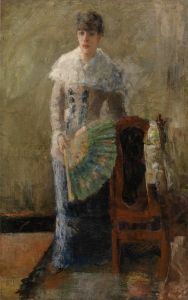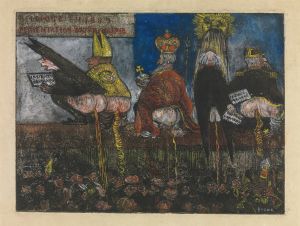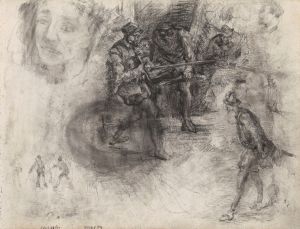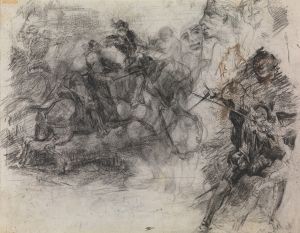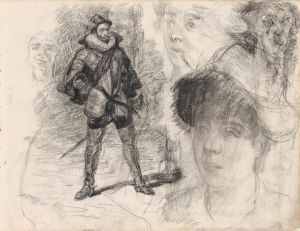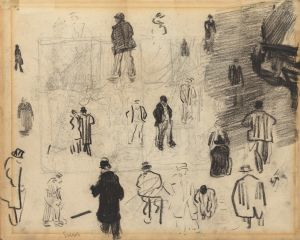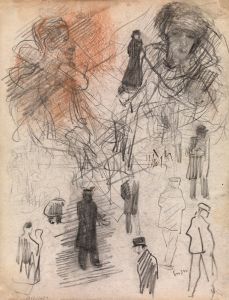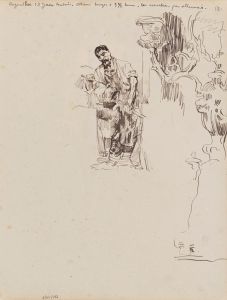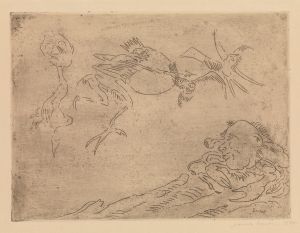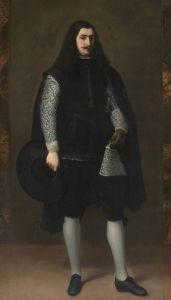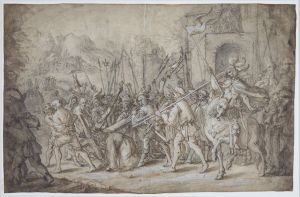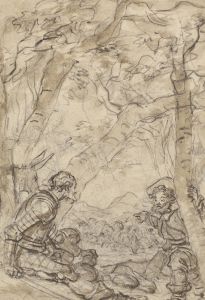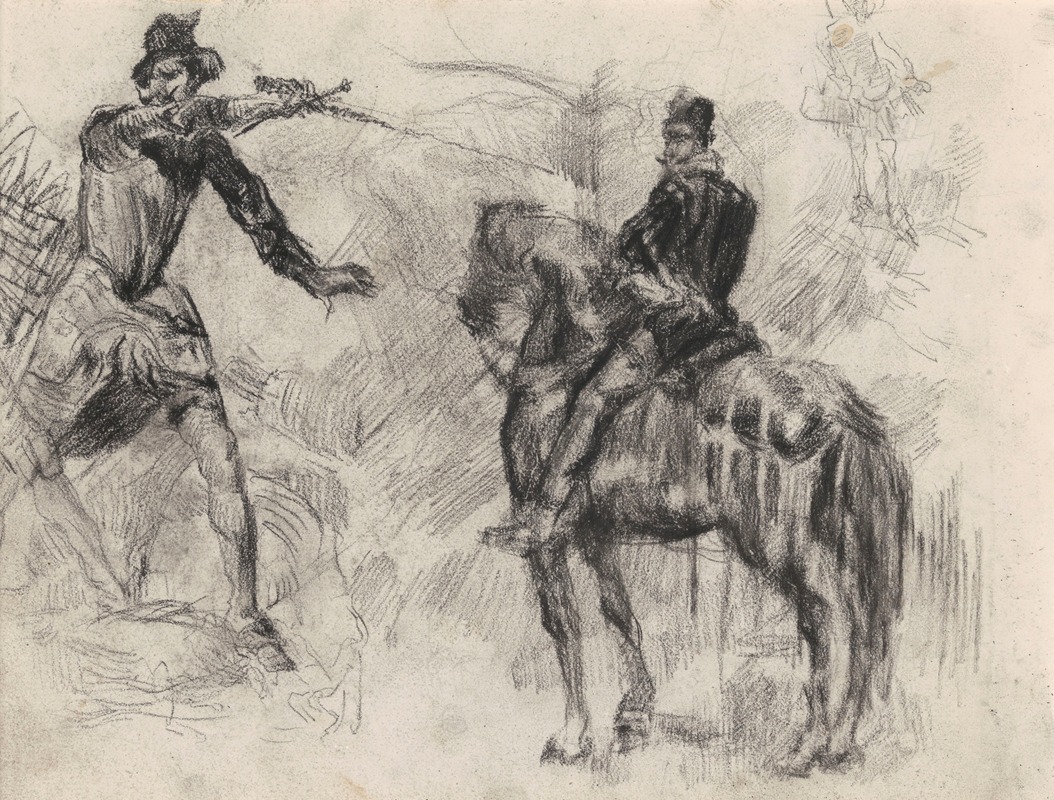
Don Quixote
A hand-painted replica of James Ensor’s masterpiece Don Quixote, meticulously crafted by professional artists to capture the true essence of the original. Each piece is created with museum-quality canvas and rare mineral pigments, carefully painted by experienced artists with delicate brushstrokes and rich, layered colors to perfectly recreate the texture of the original artwork. Unlike machine-printed reproductions, this hand-painted version brings the painting to life, infused with the artist’s emotions and skill in every stroke. Whether for personal collection or home decoration, it instantly elevates the artistic atmosphere of any space.
James Ensor, a prominent Belgian painter and printmaker, is known for his unique style that often incorporates elements of satire, fantasy, and the grotesque. One of his lesser-known works is "Don Quixote," which reflects his fascination with the literary character created by Miguel de Cervantes. Ensor's interpretation of Don Quixote is a testament to his ability to blend traditional themes with his distinctive artistic vision.
James Ensor was born in 1860 in Ostend, Belgium, and spent most of his life there. He was a key figure in the Belgian avant-garde movement and is often associated with the Symbolist and Expressionist movements. His work is characterized by its vibrant use of color, intricate detail, and a penchant for the bizarre and the macabre. Ensor's art often critiques societal norms and explores themes of mortality, identity, and the absurdity of human existence.
The character of Don Quixote, from Cervantes' novel "Don Quixote de la Mancha," is a fitting subject for Ensor. The novel, first published in the early 17th century, tells the story of an aging nobleman who becomes a self-declared knight-errant, embarking on a series of misguided adventures. Don Quixote's idealism and his struggle against the mundane realities of life resonate with Ensor's own artistic themes.
Ensor's "Don Quixote" captures the essence of the character's quixotic nature. While specific details about the painting's composition and style are limited, Ensor's typical approach would likely include vivid colors and a dynamic composition, possibly incorporating elements of caricature and satire. Ensor often used masks and skeletons in his work to symbolize the hidden aspects of human nature and the inevitability of death, themes that could easily align with the story of Don Quixote.
Throughout his career, Ensor was known for his innovative use of light and shadow, as well as his ability to convey emotion and narrative through his work. His paintings often feature crowded scenes filled with figures that seem to jostle for attention, a technique that could be used to depict the chaotic adventures of Don Quixote and his loyal squire, Sancho Panza.
Ensor's work, including his interpretation of Don Quixote, has been influential in the development of modern art. His bold use of color and form, along with his willingness to tackle complex and often controversial subjects, paved the way for future generations of artists. Today, Ensor is celebrated as one of Belgium's most important artists, and his works are held in major collections around the world.
While specific information about Ensor's "Don Quixote" is scarce, the painting remains an intriguing part of his oeuvre, reflecting his deep engagement with literary and cultural themes. Through his art, Ensor invites viewers to explore the boundaries between reality and imagination, much like Don Quixote himself.







